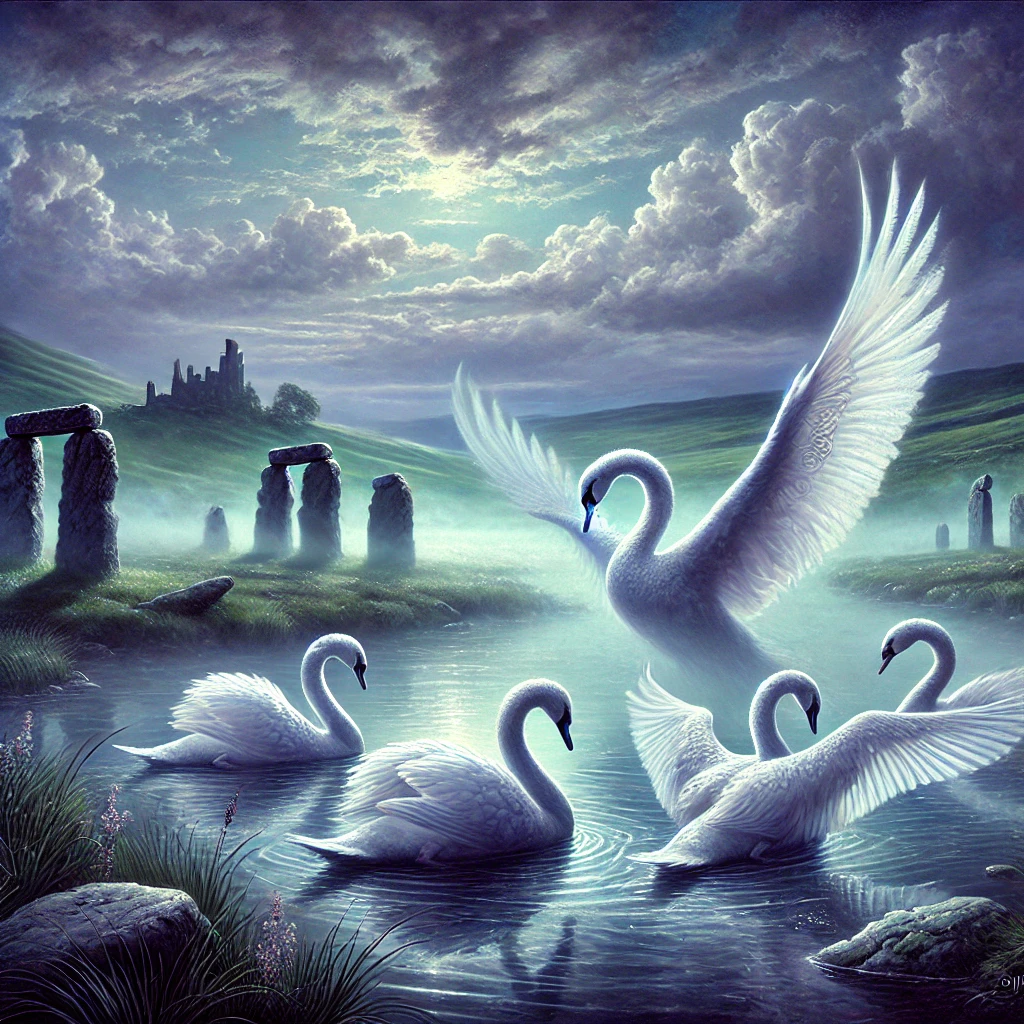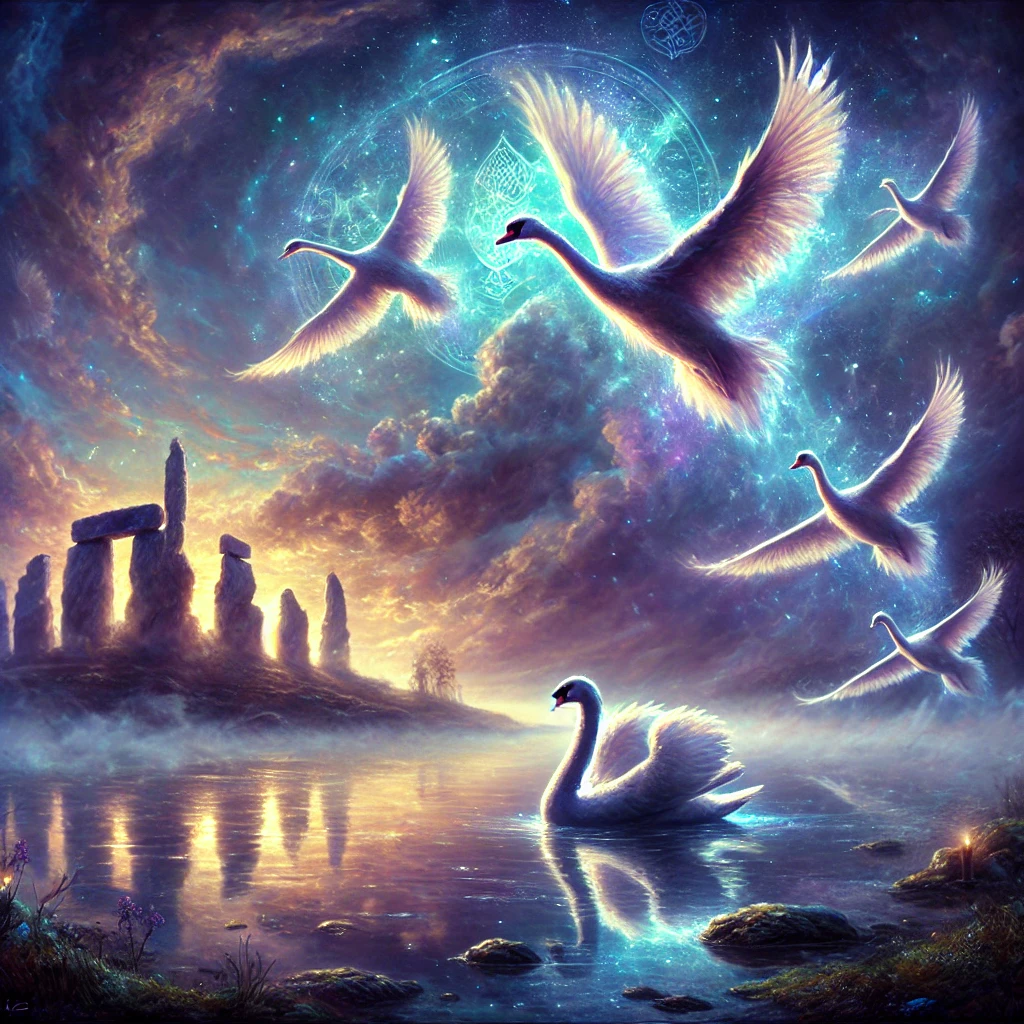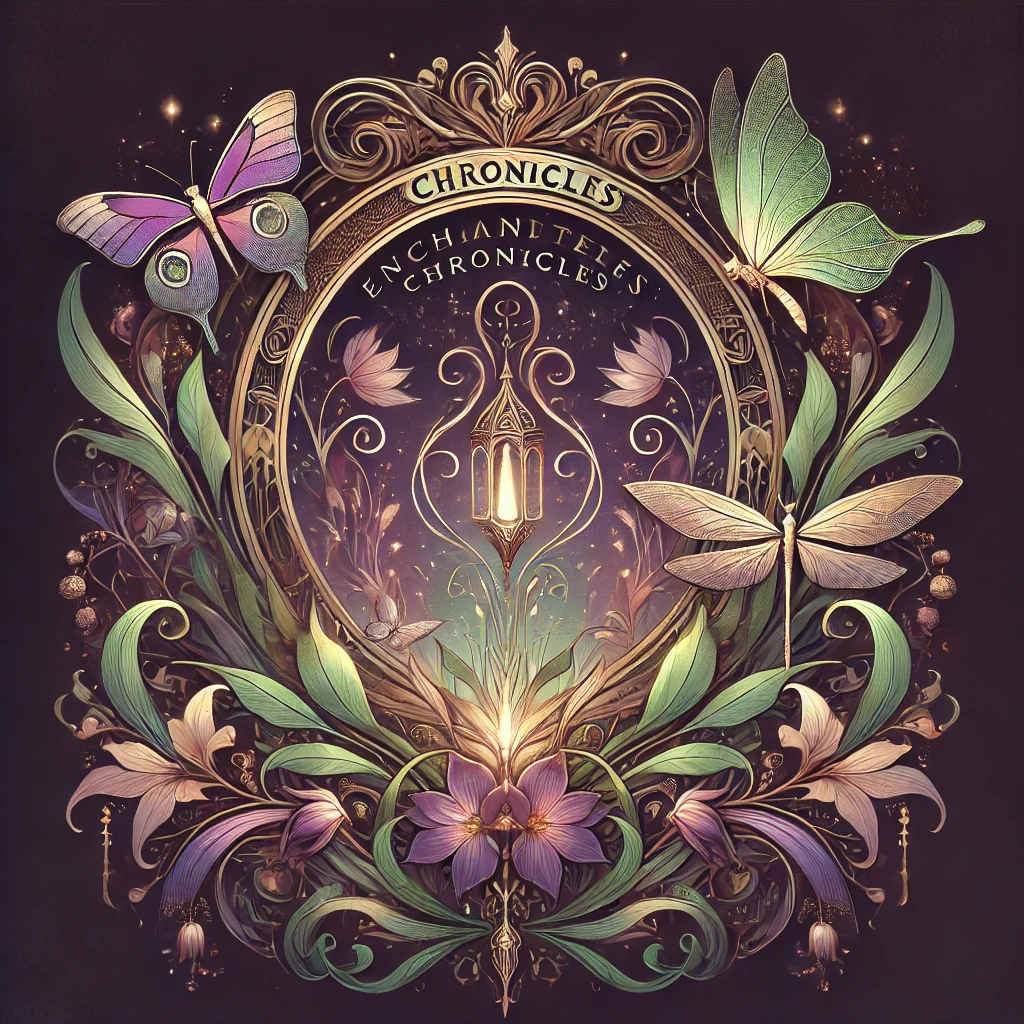Children of Lir – Origins of the Legend
The tale of the Children of Lir is one of the most well-known stories from Irish mythology, originating from the Celtic oral tradition before being recorded in medieval manuscripts such as the Book of Leinster in the 12th century. It is part of the Mythological Cycle, which tells of the divine race known as the Tuatha Dé Danann, the supernatural beings who once ruled Ireland.
The legend of the Children of Lir is one of the most famous stories from Irish mythology, particularly within the Irish Mythological Cycle. It appears in texts like the Book of Invasions (Lebor Gabála Érenn) and other medieval writings.
This Celtic story tells of how, after centuries of suffering and transformation, the children of Lir regain their human forms at the end of their ordeal, but only to die shortly afterward. This tale is often seen as a story of family love, cruelty, sacrifice, and resilience.
This legend is a central element of Irish folklore and is deeply rooted in Ireland’s history and culture, often shared through songs, poems, and stories.
In this story, Lir, a powerful chieftain and sea god, had four beloved children: Fionnuala, Aodh, Fiachra, and Conn. After the tragic loss of his first wife, Lir married Aoife, the sister of his late wife. At first, she loved the children, but soon, jealousy consumed her. Unable to bear the love their father had for them, she cast a terrible spell upon them, transforming them into swans and condemning them to wander the lakes and seas of Ireland for 900 years.
The Curse and the Long Exile
Under Aoife’s cruel enchantment, the Children were bound to spend:
300 years on Lake Derravaragh, their father’s domain.
300 years on the c, a harsh and freezing stretch of water between Ireland and Scotland.
300 years on the Atlantic Ocean, enduring storms and solitude.
Despite their transformation, the swan-children retained their human voices and sang the most sorrowful, beautiful songs ever heard in Ireland. Their music, filled with longing and loss, enchanted all who listened, but they could never escape their fate.
The Breaking of the Spell
After centuries of suffering, the swan-children’s curse was finally lifted when they heard the bells of a Christian monastery, as foretold in the prophecy. Upon reaching the shore, they were restored to human form, but as centuries had passed, they were now frail, ancient beings. Soon after, they perished, finding peace at last.
Symbolism and Lasting Influence
The story of the swan-Children is more than just a tragic myth—it is a tale that echoes the deep themes of Irish folklore: exile, endurance, and the passage of time. It reflects Ireland’s history of suffering and resilience, symbolizing the eternal connection between land, sea, and spirit.
Today, the legend lives on in Irish culture
Lake Derravaragh, in County Westmeath, is believed to be where the swans first resided, drawing visitors who wish to walk in the footsteps of the legend.
Sculptures and artwork, such as the famous monument in Dublin’s Garden of Remembrance, depict the swan-children in flight.
Literature, music, and theater continue to reinterpret the tale, ensuring it remains an integral part of Ireland’s storytelling tradition.
Ireland’s Timeless Tale
The story of the Children of Lir remains one of the most beloved and melancholic legends of Irish mythology, a tale that speaks to the universal themes of love, betrayal, and the power of time. Whether whispered by a fireside or read in the pages of history, the story continues to enchant and move those who hear it, a timeless tribute to Ireland’s rich folklore.
For those who seek the magic of Ireland’s past, this is a story that will forever soar, much like the swans who once graced its waters.




